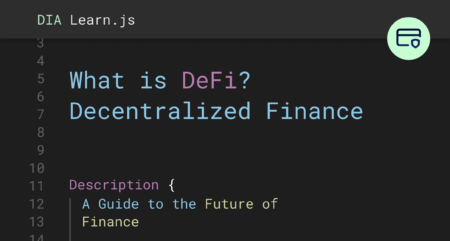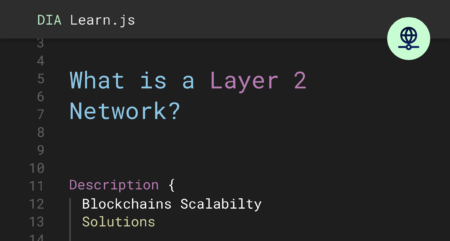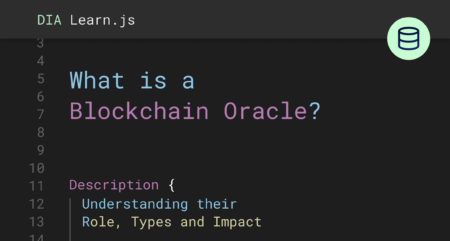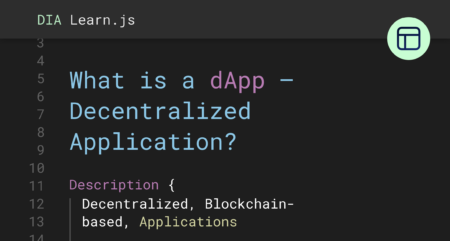What is a Layer 1 Network? A Comprehensive Guide
Explore the essentials of Layer 1 blockchains in this comprehensive guide, covering their functions, features and role in the Web3 ecosystem.
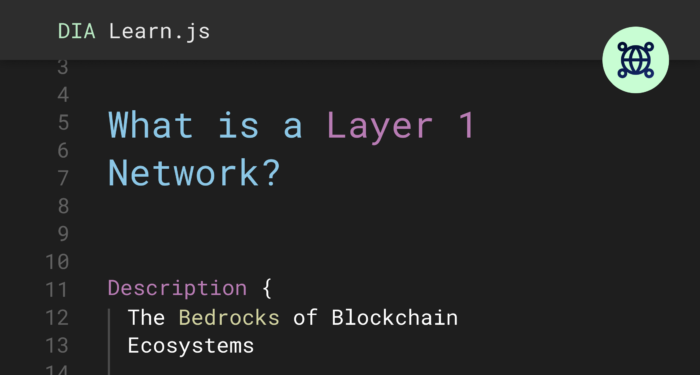
What is Layer 1 in Blockchain and How Does It Function?
Layer 1 blockchain refers to the fundamental architecture of a blockchain network. It’s akin to the bedrock of a building, providing the foundational structure upon which everything else is built. This layer includes the core components such as the blockchain protocol, consensus mechanism, and the native cryptocurrency. It is responsible for validating and recording transactions, ensuring security, and maintaining decentralization.
Key Characteristics of Layer 1:
- Consensus Mechanism: The method by which transactions are validated. Common mechanisms include Proof of Work (PoW) and Proof of Stake (PoS).
- Scalability: The ability to handle large volumes of transactions. Scalability is a significant challenge for many Layer 1 blockchains.
- Security: Ensures the integrity and immutability of the blockchain.
- Decentralization: A key feature where no single entity has control over the entire network.
Functionality:
Layer 1 blockchains function by allowing multiple blockchain nodes (computers) to participate in the network. Each node maintains a copy of the ledger, and transactions are validated through the consensus mechanism. This ensures a high level of security and trustworthiness in the network.
Examples:
- Bitcoin: Bitcoin uses Proof of Work (PoW), focusing on security and decentralization, and is the first blockchain network. Revolutionized digital payments by enabling peer-to-peer transactions without a central authority.
- Ethereum: Ethereum was initially PoW but transitioned to Proof of Stake (PoS) in 2022 to improve scalability and energy efficiency. Ethereum introduced smart contract functionality to the blockchain, allowing for programmable applications, expanding the use cases of blockchain beyond transactions.
In essence, Layer 1 is the core on which all blockchain functionalities are built, providing the necessary framework for a protocol to verify transactions through cryptography and record them in decentralized digital ledger.
What is Ethereum? Explained by Ethereum Co-Founder Vitalik Buterin
Distinguishing Layers: Comparing Layer 1 and Layer 2 Solutions
Layer 1 and Layer 2 solutions are integral components of the blockchain ecosystem, each serving distinct roles in enhancing the network’s functionality.
Layer 1 vs. Layer 2: Key Differences
- Foundation vs. Extension: Layer 1 is the base layer of a blockchain, whereas Layer 2 is built on top of it, providing additional scalability and speed.
- Security and Decentralization: Layer 1 prioritizes security and decentralization, sometimes at the cost of speed and scalability. Layer 2 focuses on enhancing these aspects without compromising the underlying security.
Learn more about Layer 2 networks in our in depth article here.
Scalability Solutions:
While Layer 1 blockchains like Bitcoin and Ethereum struggle with scalability issues due to their design, Layer 2 solutions offer a way to process transactions more efficiently. By handling transactions off the main chain (Layer 1) and then recording them collectively, Layer 2 solutions like the Arbitrum Network allow for faster and more efficient transaction processing.
Integration and Interoperability:
Layer 2 solutions are designed to be interoperable with Layer 1 blockchains. This means they can leverage the security and trust of the main blockchain while providing improved performance.
Key Features and Benefits of Layer 1 Blockchains
Layer 1 blockchains offer several key features and benefits that make them the backbone of the blockchain world.
Key Features:
- Decentralization: Ensures that no single entity has control over the network, enhancing trust and security.
- Security: The decentralized nature and consensus mechanisms like PoW and PoS make Layer 1 blockchains highly secure against attacks.
- Transparency and Immutability: All transactions on the blockchain are transparent and immutable, which ensures reliability and trustworthiness. Additionally, all code associated with these transactions is made public and is open-source.
Benefits:
- Trustless Environment: Users can transact without the need for a trusted intermediary, reducing the risk of fraud and corruption as well as reducing operational costs.
- Global Accessibility: Layer 1 blockchains are accessible to anyone with an internet connection, democratizing access to financial services.
- Innovation Platform: They provide a platform for further innovations in decentralized applications (dApps) and smart contracts to optimize real-world use cases.
Scalability: The Achilles' Heel of Layer 1 Blockchains
Scalability is a significant challenge for Layer 1 blockchain networks, impacting their ability to handle large volumes of transactions efficiently.
Challenges of Scalability:
- Limited Transaction Throughput: Most Layer 1 blockchains can only process a limited number of transactions per second (TPS), leading to congestion and higher transaction fees.
- Trade-off Between Security, Decentralization, and Scalability: Known as the Blockchain Trilemma, achieving scalability often requires compromises in either security or decentralization.
- User Experience: Slow transaction times and high fees can hinder user experience and adoption.
Efforts to Address Scalability:
Blockchain scaling solutions can be divided into on-chain and off-chain types.
- On-chain scaling: involves changes to the Ethereum protocol (Layer 1 Mainnet). It previously focused on sharding, which meant splitting the blockchain into shards for verification by subsets of validators. However, scaling by Layer 2 rollups, supported by adding new, cheaper data forms to Ethereum blocks, has become more favored.
- Off-chain scaling solutions: implemented separately from Layer 1 Mainnet, include Layer 2 solutions like optimistic rollups, zero-knowledge rollups, and state channels, as well as other forms like sidechains, validiums, and plasma chains. These solutions vary in security and efficiency and are designed to reduce network congestion and improve transaction speed.
Impact on the Ecosystem:
The scalability issues of Layer 1 blockchains affect their practicality for everyday transactions and limit their potential for widespread adoption. This is because the user experience on blockchain networks becomes fragmented, requiring users to integrate Layer 2 solutions into their wallets, bridge funds from Layer 1 to Layer 2 networks, and manage funds across both layers. Addressing these issues is crucial for the future growth and utility of blockchain technology.
Exploring Popular Layer 1 Blockchain Platforms
The blockchain ecosystem is home to several influential Layer 1 platforms, each with its unique features and contributions to the space.
Leading Layer 1 Platforms and Number of Transactions:
Ethereum: Pioneered smart contracts and dApps, leading to a myriad of decentralized applications. Powered by ETH.
BNB Chain: BNB Chain is a Layer-1 by the Binance exchange and offers high scalability and a thriving ecosystem,. Powered by BNB.
Solana: Known for its high throughput and low transaction costs, aiming to improve scalability. Powered by the SOL token.
Avalanche: Avalanche is a blockchain platform that aims to address the blockchain trilemma of scabalability, security and decentralization.
How Do Consensus Mechanisms in Layer 1 Blockchains Work?
Consensus mechanisms are the heart of Layer 1 blockchains, determining how transactions are verified and added to the blockchain.
Functioning of Consensus Mechanisms:
- Transaction Validation: Validators or miners confirm the legitimacy of transactions.
- Block Creation: Once a transaction is validated, it is grouped into a block and added to the blockchain.
- Rewards and Incentives: Validators or miners are rewarded with cryptocurrency for their efforts in maintaining the network.
Core Consensus Mechanisms:
- Proof of Work (PoW):
- Used By: Bitcoin, Ethereum (until its recent upgrade), Monero.
- Features: Requires validators (miners) to solve complex cryptographic puzzles, which consumes significant computational power and electricity.
- Pros: High security and decentralized.
- Cons: Energy-intensive and not very scalable.
- Proof of Stake (PoS):
- Used By: Ethereum (post-upgrade), Cardano, Polkadot, Tezos, EOS.
- Features: Validators are chosen based on the amount of cryptocurrency they hold and are willing to “stake” as collateral.
- Pros: More energy-efficient than PoW and offers improved scalability.
- Cons: Can lead to centralization if wealth is concentrated among few validators.
- Delegated Proof of Stake (DPoS):
- Used By: Networks like EOS and Binance Smart Chain.
- Features: A variation of PoS where token holders vote for a small number of delegates who validate transactions.
- Pros: Faster and more scalable than traditional PoS.
- Cons: Risk of centralization due to fewer validators.
- Proof of History (PoH):
- Used By: Solana.
- Features: Introduces verifiable timestamps to transactions, creating a historical record.
- Pros: High scalability and transaction speed.
- Cons: Requires accurate timekeeping, may have centralization concerns.
- Byzantine Fault Tolerance (BFT):
- Used By: Hyperledger, Stellar.
- Features: System functions correctly even if some nodes fail or act maliciously.
- Pros: High fault tolerance, fast decision-making.
- Cons: Requires trust in validators, not suitable for all types of networks.
Security and Decentralization in Layer 1 Blockchain
Security and decentralization are the pillars of Layer 1 blockchain technology, ensuring the integrity and trustworthiness of the network.
Ensuring Security:
- Consensus Mechanisms: PoW and PoS provide robust security against attacks and fraudulent activities.
- Cryptography: Advanced cryptographic techniques are used to secure transactions and protect user data.
- Network Distribution: A decentralized network of nodes makes it virtually impossible for any single entity to manipulate the blockchain.
Maintaining Decentralization:
- Node Distribution: A widespread network of blockchain nodes, each with a copy of the blockchain, ensures no central point of control or failure.
- Community Governance: Many Layer 1 blockchains have community-driven governance models, allowing stakeholders to participate in decision-making.
Challenges and Balance:
Balancing decentralization with scalability and security is a key challenge for Layer 1 blockchains. Efforts to increase transaction throughput or efficiency should not compromise the network’s decentralized nature or security.
Challenges and Future of Layer 1 Blockchains
Layer 1 blockchains, while foundational to the blockchain ecosystem, face several challenges that impact their evolution and adoption.
Key Challenges:
- Scalability: The ability to process a high volume of transactions quickly and efficiently remains a significant hurdle. Still today, even Layer-2 solutions are hit by with the most recent Arbitrum being hit by partial outage due to traffic surge. Continued development of solutions to address scalability issues, potentially revolutionizing how transactions are processed. Scaling is the biggest priority in Ethereum’s vision and roadmap.
- Sustainability: The energy consumption of Proof of Work (PoW) blockchains, particularly Bitcoin, is a significant concern both environmentally. For example, Bitcoin’s annual energy consumption exceeds that of the entire country of Ukraine, amounting to 137.91 TWh per year. We are already seeing an increased focus on sustainable practices, especially in consensus mechanisms, to reduce environmental impact. Many blockchains such as Polygon are focused on sustainability, having published green manifestos and made CO2 emissions fully transparent.
- Interoperability: The ability for different blockchain networks to communicate and work together is still in nascent stages. Technologies like sidechains and blockchain bridges facilitate communication and transaction transfer between different blockchain networks. External data feeds, known as oracles, bring real-world information to blockchain networks, enabling more complex functionalities. At DIA, interoperability is a top product priority. We are pioneering cross-chain price feeds to enable cross-chain applications. In addition, we are developing solutions like our bridge attestation oracle, which is designed to enhance bridge security and transparency. These solutions are being made open-source for the entire ecosystem’s benefit.
Potential for Transformation:
Layer 1 blockchains hold the potential to transform not only the financial sector but also many aspects of our digital interactions and societal structures. As technology evolves, we can expect Layer 1 blockchains to become more efficient, accessible, and integrated into the fabric of our digital world.



